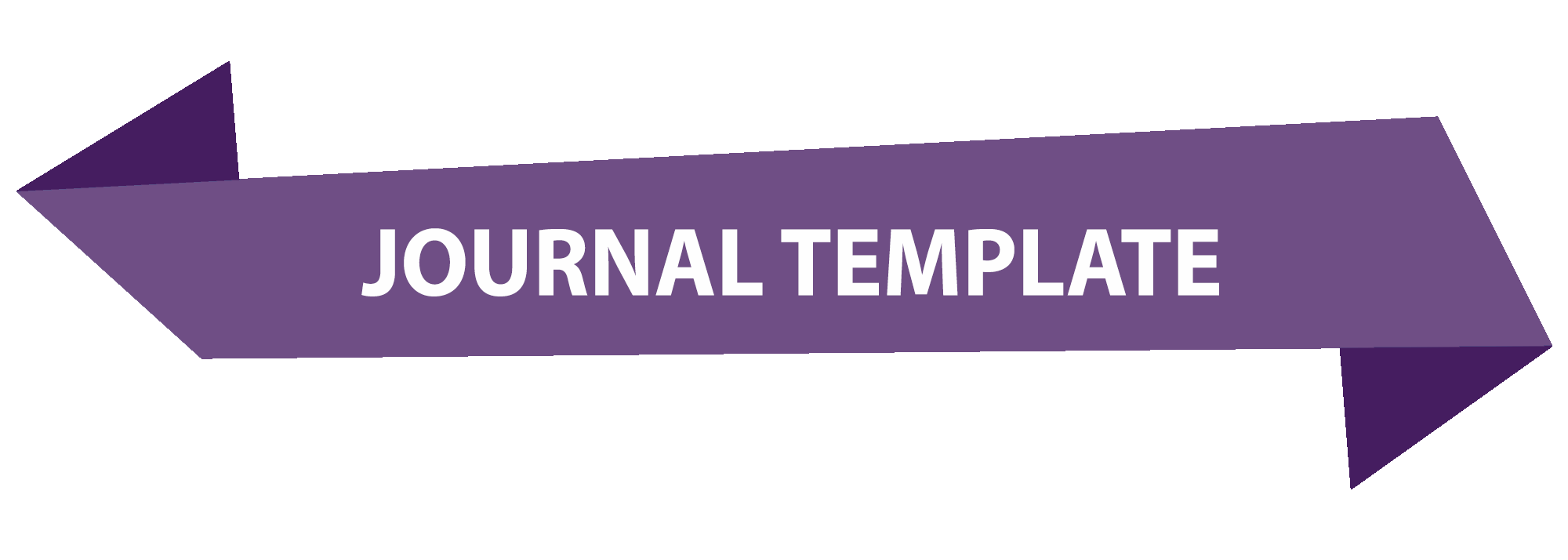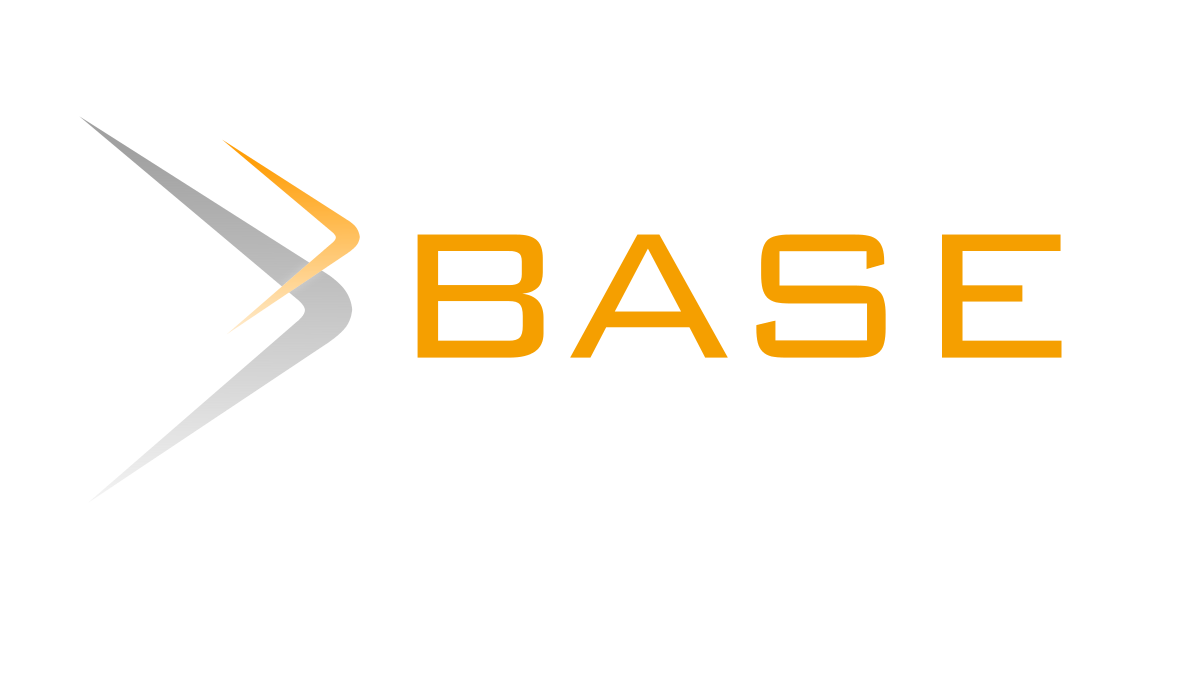Submission Preparation Checklist
As part of the submission process, authors are required to check off their submission's compliance with all of the following items, and submissions may be returned to authors that do not adhere to these guidelines.- The submission has not been previously published, nor is it before another journal for consideration (or an explanation has been provided in Comments to the Editor).
- The submission file is in OpenOffice, Microsoft Word, or RTF document file format.
- Where available, URLs for the references have been provided.
- The text is 1.5 -spaced except the title and abstract (single-spaced); uses a 12-point font; employs italics, rather than underlining (except with URL addresses); and all illustrations, figures, and tables are placed within the text at the appropriate points, rather than at the end.
- The text adheres to the stylistic and bibliographic requirements outlined in the Author Guidelines.
- Authors grant the journal right of first publication.
Author Guidelines
AUTHOR GUIDELINES
The submitted paper is advisably the result of scientific research related to nutrition and food science. The manuscript should be written in Microsoft Word software with Bahasa Indonesia or English. The font used for manuscript formatting is Times New Roman size 12 and 1,5 spaced with A4 paper sized 3 cm of the left margin, and 2,5 cm of the top, bottom, and right margin. The article length is strongly advised minimum of 20 pages including tables, figures, and appendixes. Authors are encouraged not to make mistype, spelling errors, and grammatical errors.
Member of JGPS’s editorial board will review all submitted articles with additional help from Associate Editors who have been appointed for peer-reviewed based on the potential suitability of the research topic. Authors are given the chance to rectify their manuscript based on recommendation and suggestion from Associate Editors no later than 2 weeks after the manuscript is returned.
- Title (should not exceed 20 words)
- First title is written in Bahasa Indonesia, font Times New Roman size 16, single-spaced
- Second title is written in English, font Times New Roman size 14, italic, single-spaced
- The author's name should be written without an academic title, placed under the main article title. Below the name, mention authors affiliated institutions with numbered footnotes. Authors are strongly encouraged to state email address for further correspondence.
- If authors are 2 persons from the same institution, please write … and …
- If authors are more than 2 persons from the same institution, please write …, …, …
- If authors are from different institutions, please write numbered footnotes of affiliation (1, 2, 3) above each names
- Write the name of the institutions in the second row
- Font Times New Roman size 12, single-spaced
- The abstract should be written in English and Indonesian no more than 200 words
- Contains objective, methods, result, and conclusion in one paragraph
- Font Times New Roman size 10, single-spaced
- Keywords are consistent with the main concept with 3-5 words
- If the article in Indonesian, you should put English abstract in the first arragement, then Indonesian abstract
- Introduction consists of background and objective of the study. Should be presented in narrative, normal text with no bullets or numbering. Introductory length is recommended to be 15-20% of total manuscript length written in Times New Roman, size 12, spacing 1,5
- Methods describes research design or planned research approach
- Research procedures should be written coherently, concisely, and clearly
- Methods consist of research design, place and time, number of sample and sampling technique or materials and instruments, type and data collection technique or research steps, and data analysis.
- Data analysis should describe all statistical tests utilised and any specific computer-based statistical program used.
- Result and Discussion describes the study result concisely and clearly. Discussion should contains explanation and interpretation of the findings, which attributed to recent theories or other related studies.
- Tables and Illustrations
- The findings can be presented in tables, graphics, or figures in a maximum number of three.
- Tables and illustrations are completely labelled and numbered consecutively.
- Table’s label and figure’s legend are Times New Roman, size 10, single-spaced
- Authors are encouraged to present tables in the form of open table, size 10 and single-spaced
- Conclusion reports concrete findings that should be written concisely
- The conclusion explanation is in narrative form, not enumerative
- Do not report repetition from introduction, methods, or discussion content, and should not mention duplicate data from study findings
- Citations and References it is preferable to cite references from journals, books or monographs, proceeding, patent, and website access from reliable sources
- In-text references should be written in APA format by the surname(s) of the author(s) followed by publication year. For references more than two authors, mention the first author followed by et al. Example:
Winarsi (2010)
Winarsi and Purwanto (2012)
Winarsi et al. (2016)
- References bibliography should be written in Harvard style, only contains referenced sources with alphabetical orders. The name of authors are all mentioned in this section.
- Font Times New Roman size 10, single-spaced
- Examples of references instructions are as follows:
- Journals
Winarsi H, Yuniaty A, Nuraeni I. 2016. Hypocholesterolemic and attenuated oxidized-LDL of epinephrine-induced atherosclerosis rats using cardamom rhizome ethanolic extract: Study of functional-food components. International Food Research Journal 23(5): 2103-2111.
Hernáez A, Castañer O, Elosua R, Pintó X, Estruch R, Salas-Salvadó J, Corella D, Arós F, Serra-Majem L, Fiol M, Ortega-Calvo M, Ros E, Martínez-González MÁ, de la Torre R, López-Sabater MC, Fitó M. 2017. Mediterranean Diet Improves High-Density Lipoprotein Function in High-Cardiovascular-Risk Individuals Clinical Perspective. Circulation. 135(7): 633
http://dx.doi.org/10.1161/circulationaha.116.023712
- Book
Banerjee A and Watson TF. 2011. Pickard’s manual of operative dentistry. 9th edn. Oxford: Oxford University Press.
- Website access
WHO. 2014. WHO Facts and Figures on Childhood Obesity. World Health Organization. http://www.who.int/end-childhood-obesity/facts/en/ [Accessed 22 Desember 2016]
- Proceeding
Winarsi H, Sasongko ND, Purwanto A, and Nuraeni I. 2013. Cardamom leaves extract reduced oxidative stress level in plasma alloxan-induced diabetic rats. [Proceeding] 13th Asean Food Conference. Singapore: Meeting Future Food Demands, Security and Sustainability.
- Patent
Winarsi H. 2015. Ekstrak rimpang kapulaga (Amomum Cardomomum) kaya flavonoid sebagai antioksidan, imunostimulan, dan antiaterosklerosis. Paten. P00201508144.
Stratasys, Inc. 1989. Apparatus and Method for Creating Three-dimensional Objects. US5121329.
PEDOMAN PENULIS
Artikel yang diserahkan adalah hasil penelitian yang berkaitan dengan bidang ilmu gizi. Naskah ditulis pada program Software Ms Word dengan menggunakan Bahasa Indonesia atau Bahasa Inggris. Format penulisan dengan font Times New Roman ukuran 12 dan spasi 1,5 pada kertas A4, dengan tepi kiri 3 cm, dan tepi atas, bawah, kanan 2,5 cm. Panjang artikel minimal 15 halaman termasuk tabel, gambar, dan lampiran. Diharapkan tidak terjadi kesalahan ketik, ejaan, dan kalimat baku.
Semua artikel ditelaah oleh editor dan Mitra Bestari yang telah ditunjuk menurut bidang kepakarannya. Penulis artikel diberi kesempatan untuk memperbaiki artikel atas dasar rekomendasi/saran dari Mitra Bestari paling lambat 2 minggu setelah revisi naskah dikembalikan.
- Judul (tidak lebih dari 20 kata)
- Judul Pertama Berbahasa Indonesia, Times New Roman ukuran 16, spasi 1
- Judul kedua berbahasa Inggris, font Times New Roman ukuran 14, spasi 1 [dicetak miring]
- Nama Penulis dicantumkan tanpa gelar akademik dan ditempatkan di bawah judul artikel. Di bawah nama penulis dicantumkan instansi asal penulis. Penulis dianjurkan untuk mencantumkan alamat email
- Jika jumlah penulis 2 dari instansi yang sama ditulis ….. dan …..
- Jika jumlah penulis > 2 dari instansi yang sama ditulis …, …., …..
- Jika penulis dari instansi berbeda, tulis diatas nama menggunakan nomor 1), 2) dst
- Baris kedua dituliskan asal instansi
- Font Times New Roman ukuran 12, spasi 1
- Abstrak ditulis dalam Bahasa Indonesia dan Bahasa Inggris (maksimum 200 kata)
- Berisi uraian tujuan, metode, hasil, dan kesimpulan dalam satu paragraf
- Font Times New Roman ukuran 10, spasi 1
- Kata kunci sesuai dengan konsep utama berjumlah 3 – 5
4) Apabila naskah dalam bahasa Indonesia, maka abstrak bahasa Inggris diletakkan di awal sebelum abstrak bahasa Inggris
- Pendahuluan berisi latar belakang dan tujuan penelitian. Disajikan dalam bentuk teks naratif normal, tanpa poin-poin atau penomoran. Panjang pendahuluan sebaiknya mencakup 15-20% dari total panjang naskah, ditulis menggunakan Times New Roman ukuran 12, spasi 1,5
- Metode menguraikan tentang rancangan penelitian atau pendekatan yang digunakan
- Prosedur penelitian ditulis secara runtut, singkat dan jelas
- Metode mencakup desain penelitian, tempat dan waktu, jumlah dan teknik pengambilan sampel atau alat dan bahan penelitian, jenis dan teknik pengumpulan data atau langkah-langkah penelitian, serta analisis data.
- Data analisis harus mendeskripsikan seluruh tes statistik yang digunakan dan spesifikasi program statistik berbasis komputer yang digunakan.
- Hasil dan Pembahasan berisi deskripsi hasil penelitian yang disajikan secara singkat dan jelas. Pembahasan merupakan penjelasan, interpretasi hasil penelitian yang dikaitkan dengan teori atau hasil penelitian terkait
- Tabel dan ilustrasi
- Hasil analisis dapat disampaikan dalam bentuk tabel, grafik, gambar dengan jumlah maksimal 3.
- Tabel dan ilustrasi diberi judul lengkap dan diberi penomoran secara berurutan
- Judul tabel dan gambar ditulis dengan Times New Roman, ukuran 10, spasi 1
- Tabel disajikan dalam bentuk tabel terbuka, ukuran 10, spasi 1
- Kesimpulan hasil konkrit dari penelitian yang ditulis secara singkat
- Paparan kesimpulan tidak enumeratif tapi naratif
- Tidak ada pengulangan pendahuluan, metodologi, maupun isi diskusi, serta tidak mencantumkan kembali data dari hasil penelitian
- Pustaka diutamakan bersumber dari pustaka dalam bentuk jurnal, buku atau monograf, prosiding, paten, dan akses website ilmiah
- Pustaka dalam teks berformat APA ditulis nama belakang penulis yang diikuti tahun publikasi. Untuk referensi lebih dari dua penulis, cantumkan nama penulis pertama diikuti et al. Contoh:
Winarsi (2010)
Winarsi dan Purwanto (2012)
Winarsi et al. (2016)
- Menggunakan metode penulisan Harvard dan hanya memuat sumber yang diacu serta ditulis berurutan secara alfabetik. Seluruh nama penulis turut dicantumkan
- Font Times New Roman ukuran 10, spasi 1
- Contoh tata cara penulisan daftar pustaka:
- Jurnal
Winarsi H. 2007. Isoflavon Kedelai Diperkaya Dengan Zn Sebagai Antiarterosklerosis Wanita Premenopause. Biota 12(2): 70-77.
Winarsi H dan Purwanto A. 2010. Efek suplementasi protein kecambah kedelai terhadap kadar IL-1 beta penderita diabetes mellitus tipe-2. Jurnal Teknologi dan Industri Pangan 21(1): 6-10.
Winarsi H, Yuniaty A, Nuraeni I. 2016. Hypocholesterolemic and attenuated oxidized-LDL of epinephrine-induced atherosclerosis rats using cardamom rhizome ethanolic extract: Study of functional-food components. International Food Research Journal 23(5): 2103-2111.
- Buku
Suryohudoyo P. 2000. Kapita Selekta Ilmu Kedokteran Molekuler. CV Sagung Seto. Jakarta.
Winarsi H dan Nuraeni I. 2014. Makanan Pendamping ASI Berbasis bahan Lokal. Graha Ilmu. Yogyakarta.
- Akses website
WHO. 2014. WHO Fact and Figures on Childhood Obesity. World Health Organization. http://www.who.int/end-childhood-obesity/facts/en/ [Diakses tanggal 22 Desember 2016]
- Prosiding
Winarsi H, Sasongko ND, Purwanto A, and Nuraeni I. 2013. Cardamom leaves extract reduced oxidative stress level in plasma alloxan-induced diabetic rats. [Prosiding] 13th Asean Food Conference. Singapore: Meeting Future Food Demands, Security and Sustainability.
- Paten
Winarsi H. 2015. Ekstrak rimpang kapulaga (Amomum Cardomomum) kaya flavonoid sebagai antioksidan, imunostimulan, dan antiaterosklerosis. Paten. P00201508144.























